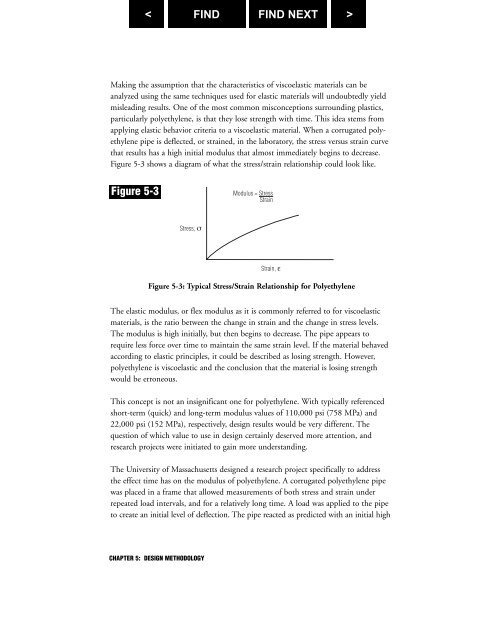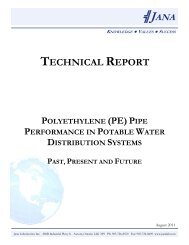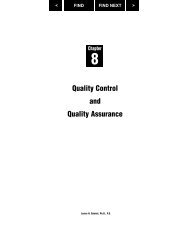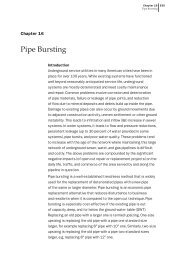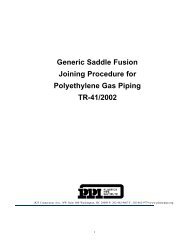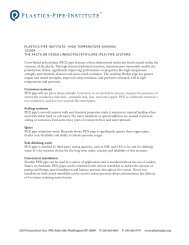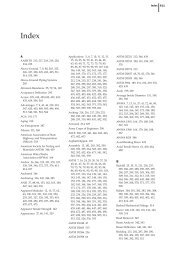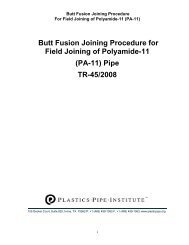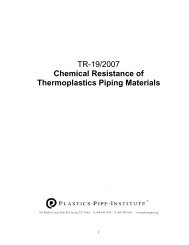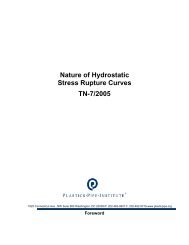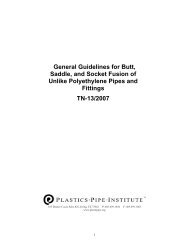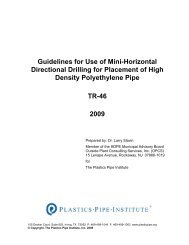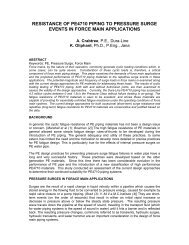Chapter 5: Design Methodology - Plastics Pipe Institute
Chapter 5: Design Methodology - Plastics Pipe Institute
Chapter 5: Design Methodology - Plastics Pipe Institute
Create successful ePaper yourself
Turn your PDF publications into a flip-book with our unique Google optimized e-Paper software.
Making the assumption that the characteristics of viscoelastic materials can beanalyzed using the same techniques used for elastic materials will undoubtedly yieldmisleading results. One of the most common misconceptions surrounding plastics,particularly polyethylene, is that they lose strength with time. This idea stems fromapplying elastic behavior criteria to a viscoelastic material. When a corrugated polyethylenepipe is deflected, or strained, in the laboratory, the stress versus strain curvethat results has a high initial modulus that almost immediately begins to decrease.Figure 5-3 shows a diagram of what the stress/strain relationship could look like.Figure 5-3Figure 5-3: Typical Stress/Strain Relationship for PolyethyleneThe elastic modulus, or flex modulus as it is commonly referred to for viscoelasticmaterials, is the ratio between the change in strain and the change in stress levels.The modulus is high initially, but then begins to decrease. The pipe appears torequire less force over time to maintain the same strain level. If the material behavedaccording to elastic principles, it could be described as losing strength. However,polyethylene is viscoelastic and the conclusion that the material is losing strengthwould be erroneous.This concept is not an insignificant one for polyethylene. With typically referencedshort-term (quick) and long-term modulus values of 110,000 psi (758 MPa) and22,000 psi (152 MPa), respectively, design results would be very different. Thequestion of which value to use in design certainly deserved more attention, andresearch projects were initiated to gain more understanding.The University of Massachusetts designed a research project specifically to addressthe effect time has on the modulus of polyethylene. A corrugated polyethylene pipewas placed in a frame that allowed measurements of both stress and strain underrepeated load intervals, and for a relatively long time. A load was applied to the pipeto create an initial level of deflection. The pipe reacted as predicted with an initial highCHAPTER 5: DESIGN METHODOLOGY


